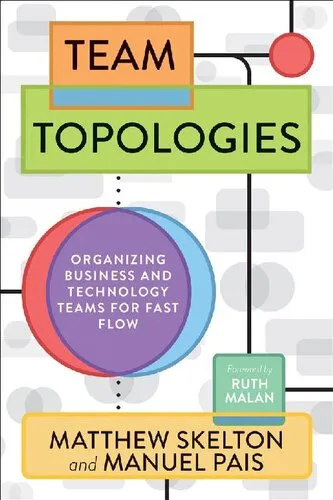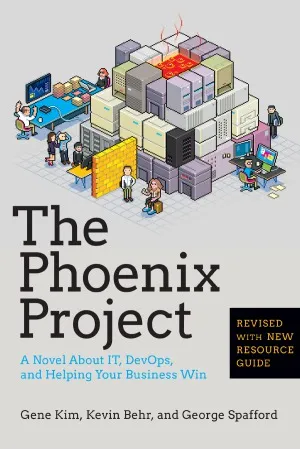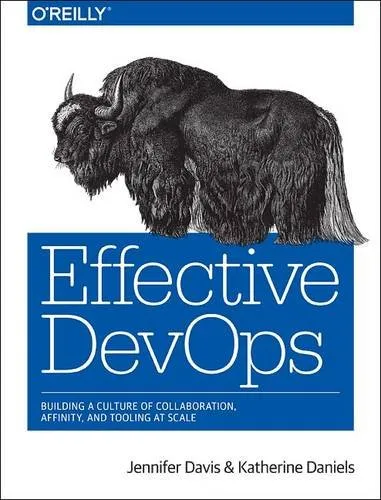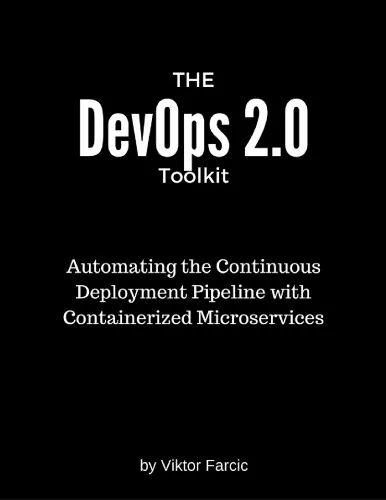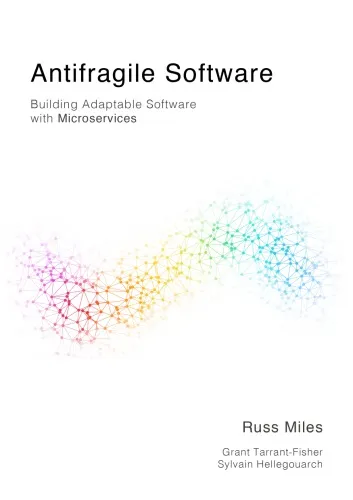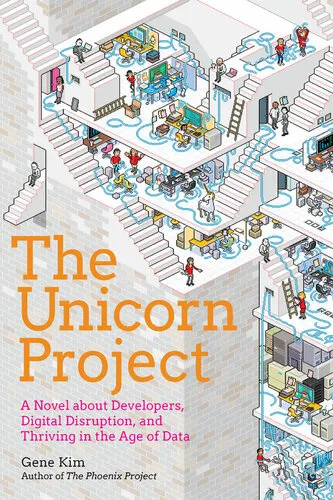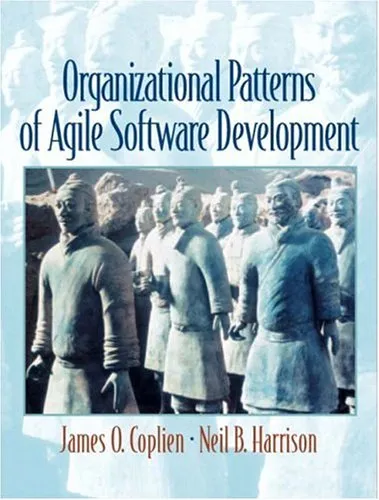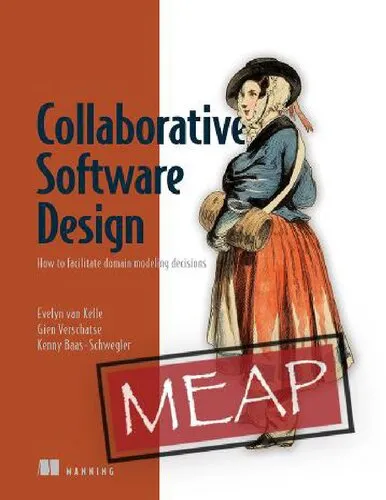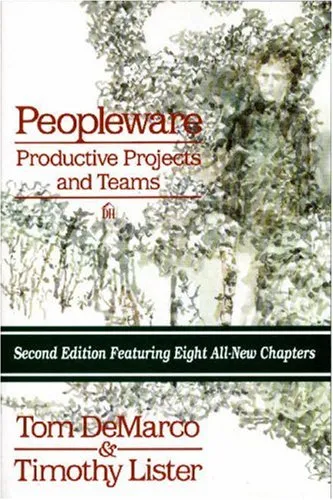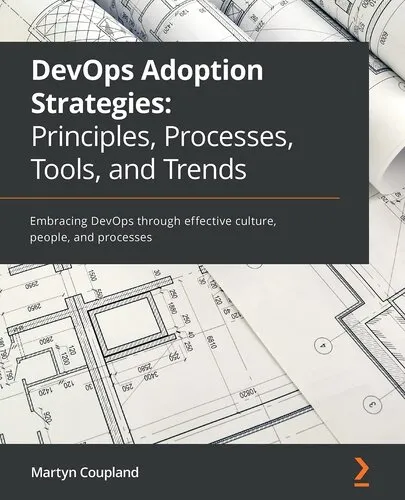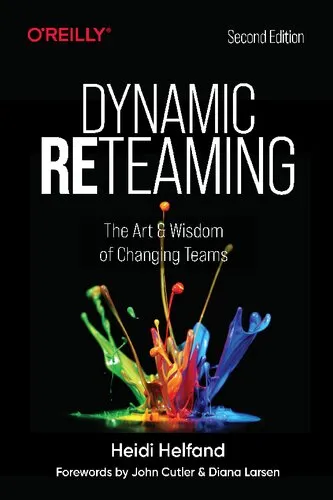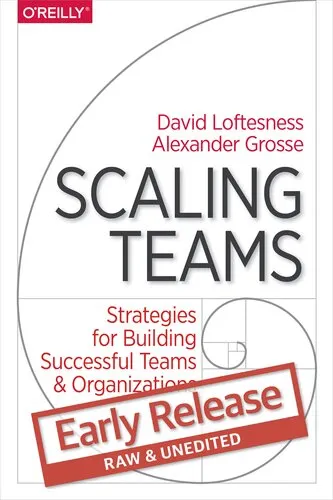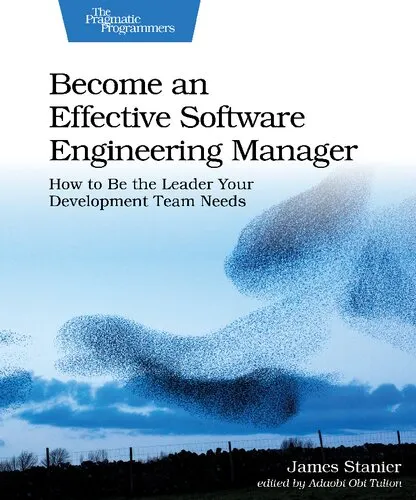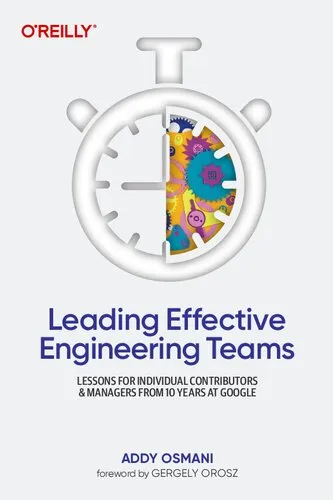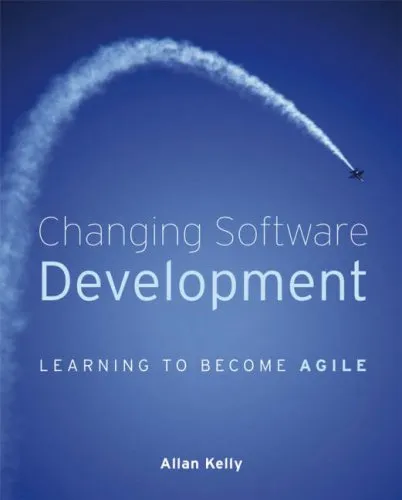Team Topologies: Organizing Business and Technology Teams for Fast Flow
5.0
بر اساس نظر کاربران

شما میتونید سوالاتتون در باره کتاب رو از هوش مصنوعیش بعد از ورود بپرسید
هر دانلود یا پرسش از هوش مصنوعی 2 امتیاز لازم دارد، برای بدست آوردن امتیاز رایگان، به صفحه ی راهنمای امتیازات سر بزنید و یک سری کار ارزشمند انجام بدینRelated Refrences:
Persian Summary
معرفی کتاب «Team Topologies: Organizing Business and Technology Teams for Fast Flow»
کتاب «Team Topologies» نوشته Matthew Skelton و Manuel Pais یکی از آثار مهم در زمینه ساماندهی و سازماندهی تیمهای تجاری و فناوری است که به منظور بهبود سرعت جریان کار طراحی شده است. این کتاب راهنمای عملیاتی و روشمند برای شرکتها و سازمانهایی است که به دنبال بهینهسازی ساختار تیمهای خود به منظور دستیابی به عملکرد بهتر و سرعت بیشتر میباشند.
خلاصهای مفصل از کتاب
در کتاب «Team Topologies»، نویسندگان به بررسی و تحلیل ساختارهای تیمی مدرن میپردازند و نشان میدهند چگونه میتوان با تغییر نحوه سازماندهی تیمها به جریان بهتر و سریعتر در کسب و کارها دست یافت. آنها چهار نوع کلیدی از تیمها را معرفی میکنند: Stream-aligned teams، Enabling teams، Complicated Subsystem teams، و Platform teams. هر کدام از این تیمها نقشی خاص در تسریع روند توسعه و ارائه خدمات ایفا میکنند.
Stream-aligned teams مستقیماً با بخشهایی از کسب و کار همگام هستند و مسئولیت تحویل کارآمد نتایج مورد نظر را دارند. Enabling teams وظیفه تقویت و پشتیبانی سایر تیمها را دارند تا آنها بتوانند به اهدف خود دست یابند. Complicated Subsystem teams بر روی حل مشکلات پیچیده خاص متمرکز هستند و Platform teams منابع و خدمات مشترک را برای سایر تیمها فراهم میکنند.
کتاب با ارائه مثالها و موارد واقعی به روشنگاری چهار تیم اصلی و نحوه تعامل آنها برای ایجاد یک اکوسیستم روان و پاسخگو میپردازد.
نکات کلیدی
- توجه به تعامل و همکاری بین تیمها برای رفع موانع و افزایش بهرهوری.
- انعطافپذیری ساختار تیمی به عنوان یک ابزار کلیدی برای مقابله با تغییرات سریع در فناوری و نیازهای تجاری.
- ضرورت داشتن درک عمیق از فرهنگ سازمانی برای پیادهسازی موفقیتآمیز Team Topologies.
- تأکید بر ایجاد قیمتهای منطقی با تیمهای Platform به منظور کاهش موانع و افزایش کارایی.
نقل قولهای معروف از کتاب
"تیمها باید به عنوان واحدهای مستقل و خودمختار عمل کنند تا بتوانند به سرعت به تغییر نیازهای کسب و کار پاسخ دهند."
"سازمانهایی که اولویت را به تعامل صحیح بین تیمها میدهند، از یک مزیت رقابتی پایدار برخوردار خواهند بود."
چرا این کتاب مهم است؟
کتاب «Team Topologies» برای هر کسی که در دنیای فناوری و مدیریت تیمها فعالیت میکند، راهنمایی بینظیر است. اهمیت این کتاب در نحوه نزدیک شدن به چارچوبهای نوین سازمانی و استفاده بهینه از تیمها برای کسب و کارهای مدرن است. این اثر به روشنی نشان میدهد که چگونه تغییرات کوچک در سازماندهی تیمها میتواند تاثیرات بزرگی بر کل شرکت بگذارد.
این کتاب با معرفی مدلهای سازمانی جدید و عملی، به مدیران و رهبران این امکان را میدهد که ساختارهای تیمی خود را به گونهای سازماندهی کنند که نه تنها برای حال بلکه برای آینده نیز مناسب باشد.
Organizing teams in a way that best enables fast software delivery is a challenge faced by many technology-driven organizations. Our book, "Team Topologies: Organizing Business and Technology Teams for Fast Flow," aims to tackle this challenge by offering a practical approach for reconceiving team design, interaction, and dynamics for optimal performance and adaptability.
Detailed Summary of the Book
In "Team Topologies," we explore the fundamental question of how to structure technology teams to deliver value continuously and efficiently. The book guides readers through an in-depth understanding of why team structure and interactions matter. We introduce four fundamental team topologies—stream-aligned, enabling, complicated subsystem, and platform teams—that align with product delivery value streams. Each topology is designed for a particular purpose, ensuring teams have clear responsibilities and ownership over parts of the system.
The book delves into the importance of team interactions, coining the term "team API" to describe the interfaces through which teams communicate and collaborate. We propose adopting defined modes of team interactions: collaboration, X-as-a-Service, and facilitating to address different collaboration needs. We also delve into Conway's Law, emphasizing the bidirectional relationship between organizational structure and software architecture.
By highlighting these interconnections, we guide leaders in reimagining their environments to reduce cognitive load and establish psychology-safety, resulting in a faster flow of change. With a focus on the evolving world of software development and delivery, the book suggests organizations should shift from project-based work towards a product-centric model and embrace a growth mindset across all divisions.
Key Takeaways
The primary lessons from "Team Topologies" include the following:
- Understand the four fundamental team topologies and their specific purposes: stream-aligned, enabling, complicated subsystem, and platform teams.
- Learn how to establish interfaces for team interactions and the advantages of adopting different interaction modes: collaboration, X-as-a-Service, and facilitating.
- Adopt a model that aligns organizational structure with software architecture through the lens of Conway’s Law.
- Address the cognitive load on teams to improve productivity and make sustainable improvements in work culture.
- Shift from project-driven approaches to long-lived product-centric teams to enhance delivery speed and quality.
Famous Quotes from the Book
Several key insights from "Team Topologies" resonate with readers, including:
"Successful teams will minimize their cognitive load and creatively combine the types of team interactions."
"The right topology will encourage healthy team dynamics and accelerate software delivery."
Why This Book Matters
In today's fast-paced digital era, businesses must adapt their structures to deliver technology solutions efficiently. "Team Topologies" offers a fresh perspective on organizing teams, rooted in real-world application and experience. The book fills a critical gap by providing actionable guidance grounded in modern software engineering principles.
Proper team structuring enhances communication and reduces delays, leading to a more responsive and agile organization. This book not only equips leaders and decision-makers with the tools to evolve their team topologies but also empowers teams to take charge of their interactions and workflows, fostering a culture of continuous improvement.
دانلود رایگان مستقیم
شما میتونید سوالاتتون در باره کتاب رو از هوش مصنوعیش بعد از ورود بپرسید
دسترسی به کتابها از طریق پلتفرمهای قانونی و کتابخانههای عمومی نه تنها از حقوق نویسندگان و ناشران حمایت میکند، بلکه به پایداری فرهنگ کتابخوانی نیز کمک میرساند. پیش از دانلود، لحظهای به بررسی این گزینهها فکر کنید.
این کتاب رو در پلتفرم های دیگه ببینید
WorldCat به شما کمک میکنه تا کتاب ها رو در کتابخانه های سراسر دنیا پیدا کنید
امتیازها، نظرات تخصصی و صحبت ها درباره کتاب را در Goodreads ببینید
کتابهای کمیاب یا دست دوم را در AbeBooks پیدا کنید و بخرید
1773
بازدید5.0
امتیاز1
نظر98%
رضایتنظرات:
5.0
بر اساس 1 نظر کاربران
hossein571
27 ژون 2025، ساعت 11:38
Good insightful books
Questions & Answers
Ask questions about this book or help others by answering
No questions yet. Be the first to ask!
